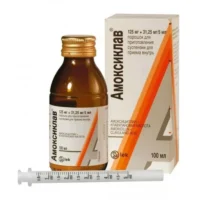Description
Doxiciclin (Doxycycline) Capsules 0.1 №10
Composition
Active Ingredient: Each capsule contains 0.1mg of Doxycycline.
Mechanism of Action
Doxycycline inhibits bacterial protein synthesis, exerting bacteriostatic effects by preventing the growth and proliferation of susceptible bacteria.
Pharmacological Properties
Doxycycline is a broad-spectrum antibiotic effective against both Gram-positive and Gram-negative bacteria. It also possesses anti-inflammatory properties, enhancing its therapeutic potential in various conditions.
Indications for Use
- Treatment of respiratory tract infections
- Urinary tract infections
- Skin infections
Contraindications
Avoid using Doxycycline if you have a known allergy to doxycycline or other tetracycline antibiotics.
Side Effects
Common side effects may include gastrointestinal disturbances, photosensitivity reactions, and skin rashes. Consult your healthcare provider if any adverse reactions occur.
Usage Instructions
Dosage: The typical dosing regimen involves an initial dose of 200mg on the first day, followed by a maintenance dose of 100mg daily. Take with a full glass of water and avoid lying down for at least 10 minutes post-administration.
Benefits Over Analogues
Doxiciclin offers comparable efficacy to other antibiotics in its class but stands out due to its convenient dosing schedule and broad-spectrum coverage.
Suitable Patient Groups
Recommended for adults and children above a certain age, as determined by a healthcare professional. Use with caution in elderly patients or those with renal impairment.
Storage and Shelf Life
Store Doxiciclin capsules in a cool, dry place away from direct sunlight. Check the expiration date on the packaging and do not use beyond the specified shelf life.
Packaging Description
Doxiciclin capsules are packed in blister packs containing 10 capsules each, ensuring convenient and accurate dosing.
Clinical Evidence and Proven Effectiveness
Doxycycline has been extensively researched and demonstrated efficacy in treating various bacterial infections. Studies published in reputable journals, such as the Journal of Antimicrobial Chemotherapy, support its effectiveness against a wide range of pathogens.





